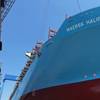BSEE Announce Final Safety Culture Policy Statement
The Bureau of Safety and Environmental Enforcement’s (BSEE) Director James Watson released the Bureau’s final Safety Culture Policy Statement.
The non-regulatory statement defines nine characteristics that are indicative of a robust safety culture. The policy statement will inform BSEE’s regulatory approach to lead the offshore oil and gas industry beyond a checklist-inspection approach toward a systemic, comprehensive approach to compliance.
"The human factor is the critical element in offshore safety,” Director Watson said. “Prescriptive regulations can reduce risks to worker safety and the environment, but they alone are not enough. Everyone working in the offshore industry must adhere to a set of core values that places safety above all else.”
BSEE defines safety culture as the core values and behaviors of all members of an organization that reflect a commitment to conducting business in a safe and environmentally responsible manner. The Safety Culture Policy Statement informs the offshore community of the Bureau's safety expectations but does not create any additional regulatory requirements.
According to BSEE, the nine characteristics of a robust safety culture are:
1. Leadership Commitment to Safety Values and Actions. Leaders demonstrate a commitment to safety and environmental stewardship in their decisions and behaviors
2. Hazard Identification and Risk Management. Issues potentially impacting safety and environmental stewardship are promptly identified, fully evaluated, and promptly addressed or corrected commensurate with their significance
3. Personal Accountability. All individuals take personal responsibility for process and personal safety, as well as environmental stewardship
4. Work Processes. The process of planning and controlling work activities is implemented so that safety and environmental stewardship are maintained while ensuring the correct equipment for the correct work
5. Continuous Improvement. Opportunities to learn about ways to ensure safety and environmental stewardship are sought out and implemented
6. Environment for Raising Concerns. A work environment is maintained where personnel feel free to raise safety and environmental concerns without fear of retaliation, intimidation, harassment, or discrimination
7. Effective Safety and Environmental Communication. Communications maintain a focus on safety and environmental stewardship
8. Respectful Work Environment. Trust and respect permeate the organization with a focus on teamwork and collaboration
9. Inquiring Attitude. Individuals avoid complacency and continuously consider and review existing conditions and activities in order to identify discrepancies that might result in error or inappropriate action
After releasing the draft Safety Culture Policy Statement on December 20, 2012, BSEE collected comments from operators, industry associations, environmental organizations and individuals. Each one was closely examined and considered before completing the final Safety Culture Policy Statement, which is available for review today in the Federal Register Reading Room, and will be published Friday.
The final Safety Culture Policy Statement is the latest in an ongoing effort by BSEE to emphasize that the offshore industry must make safety their number one priority. Also furthering this effort was the finalization of the Safety and Environmental Management Systems (SEMS) II final rule on April 5, 2013, which enhanced the original SEMS rule, also known as the Workplace Safety Rule. It provides greater protection by supplementing operators’ SEMS programs with greater employee participation, empowering field level personnel with safety management decisions and strengthening oversight by requiring audits to be conducted by accredited third-parties.
The final Safety Culture Policy Statement is available here: www.ofr.gov/OFRUpload/OFRData/2013-11117_PI.pdf
More information about the SEMS II final rule is available here: bsee.gov/BSEE-Newsroom/Press-Releases/2013/Press04052013.aspx












